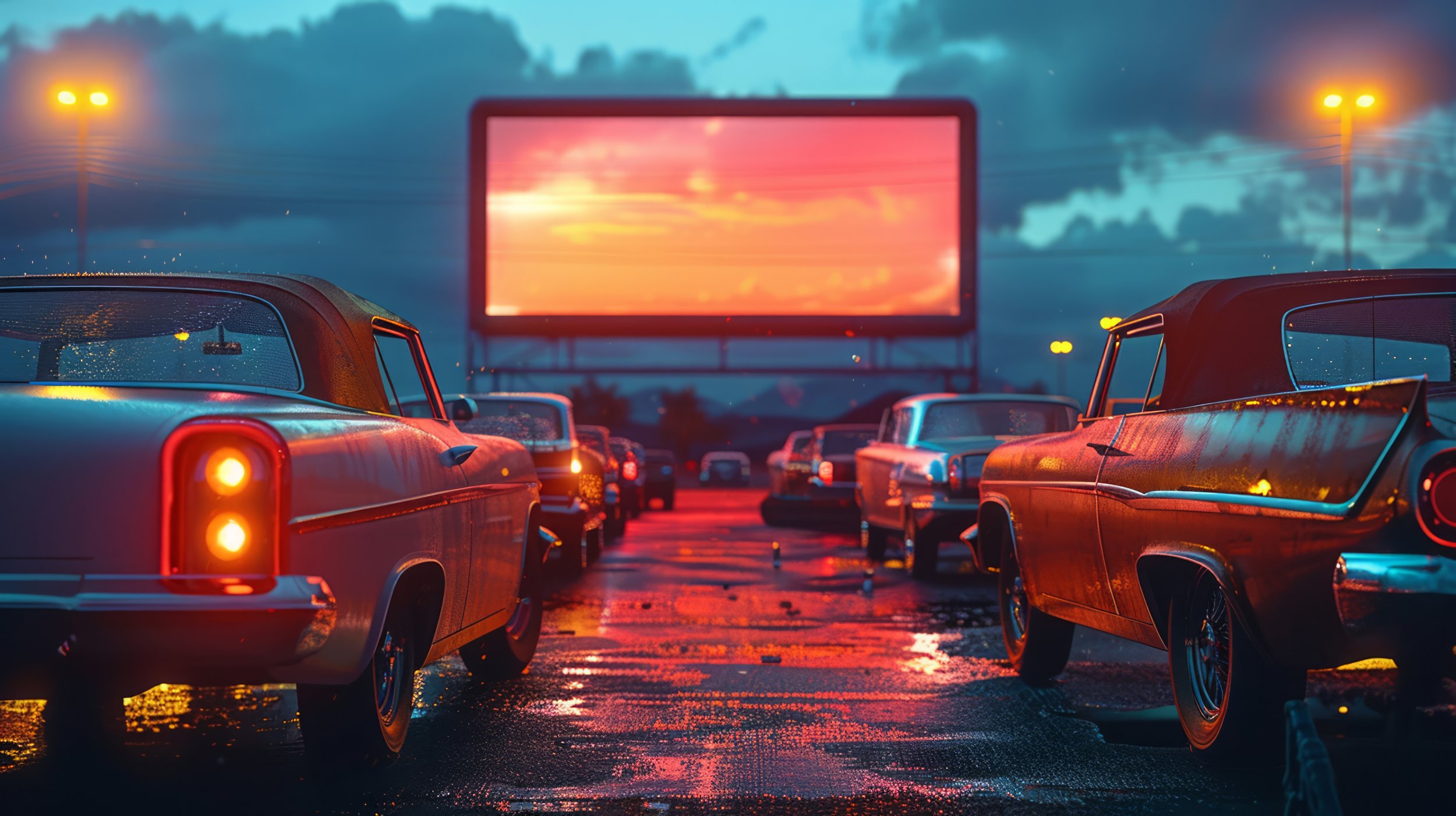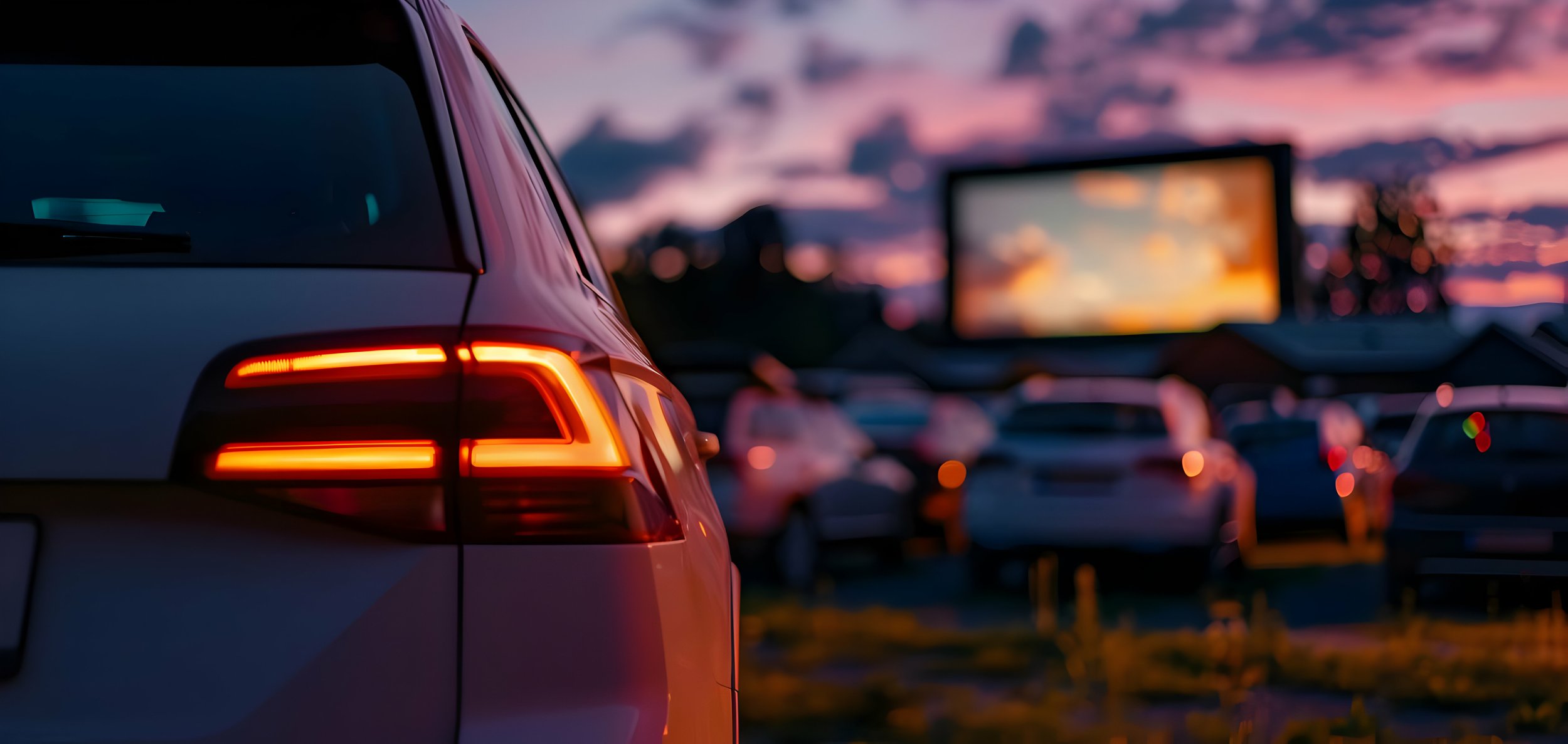
Personal Project
Drive-In Branding
Drive-In 2020 Revival
The COVID-19 pandemic significantly boosted the popularity of drive-in movie theaters. During the summer of 2020, drive-ins constituted about 21% of operating North American movie theaters but generated 70% of the box office revenue. The open-air setup and inherent physical distancing made drive-ins a safer option compared to indoor theaters.
There was a renewed interest in drive-ins because people appreciated the ability to enjoy movies from their cars while maintaining social distance. Drive-ins that had adapted to digital transitions were thriving, with new ones opening despite a general decline in numbers over the years. In 2020, ten new drive-ins opened, and several more were in development.
Historically, drive-ins have been used to mitigate the spread of illness, such as during the polio vaccine rollout. The pandemic saw a resurgence in drive-ins as a remedy for cabin fever. Pop-up drive-ins emerged in shopping centers, stores, and restaurant parking lots, providing a socially distanced entertainment option. Drive-ins expanded their offerings to include weddings, church services, concerts, art shows, and comedy performances. There were even boat-in theaters. These are examples of innovative adaptations.
Despite the decline to 305 drive-ins by October 2019, the pandemic revitalized interest in them as a safe, shared entertainment experience. The sense of community and human connection, even from the safety of one's car, was a key factor in their resurgence.
Drive-In History
Richard Hollingshead opened the first official drive-in movie theater, called Camden Drive-In, on June 6, 1933, in Pennsauken Township, Camden, New Jersey. Camden Drive-In showcased the British comedy "Wives Beware." Drivers paid 25 cents per car in addition to 25 cents per person to watch.
While outdoor movie screenings were not new, watching them from the comfort of a car was. Hollingshead, a movie fan and sales manager at his father’s company, Whiz Auto Products, was inspired by his mother's struggle to sit comfortably in traditional theater seats. He aimed to create an outdoor theater where patrons could watch from their automobiles. Hollingshead experimented with projecting films using a Kodak projector and a screen nailed to a tree in his backyard. He developed a ramp system to ensure all cars had a clear view and experimented with sound systems. He received a patent for his drive-in invention in May 1933.
Initially, the concept spread slowly, with the second drive-in, Shankweiler's, opening in Pennsylvania a year later. The introduction of in-car speakers in the early 1940s significantly boosted their popularity. By 1958, drive-ins peaked at 4,063 across the U.S., offering a unique experience where families could bring their children and enjoy movies from their cars. Drive-ins gained popularity in the 1950s-1960s, especially in the developing Midwest, with nearly 40% of drive-ins located in this region. However, indoor theaters, which could show films multiple times a day, attracted first-run movies, relegating drive-ins to showing B-movies and later, adult and horror films.
The decline of drive-ins began in the 1970s due to rising land prices, urban expansion, and the advent of video rentals. Today, around 400 drive-ins remain in the U.S., with some in Canada and Australia. While they face challenges from digital transitions and modern entertainment options, drive-ins continue to be cherished for their nostalgic value and unique charm.
Brainstorming Names
Mood Boards: Drive-In Branding Themes
DreamLand Drive-In Sketches
Updating Project Page In Progress







